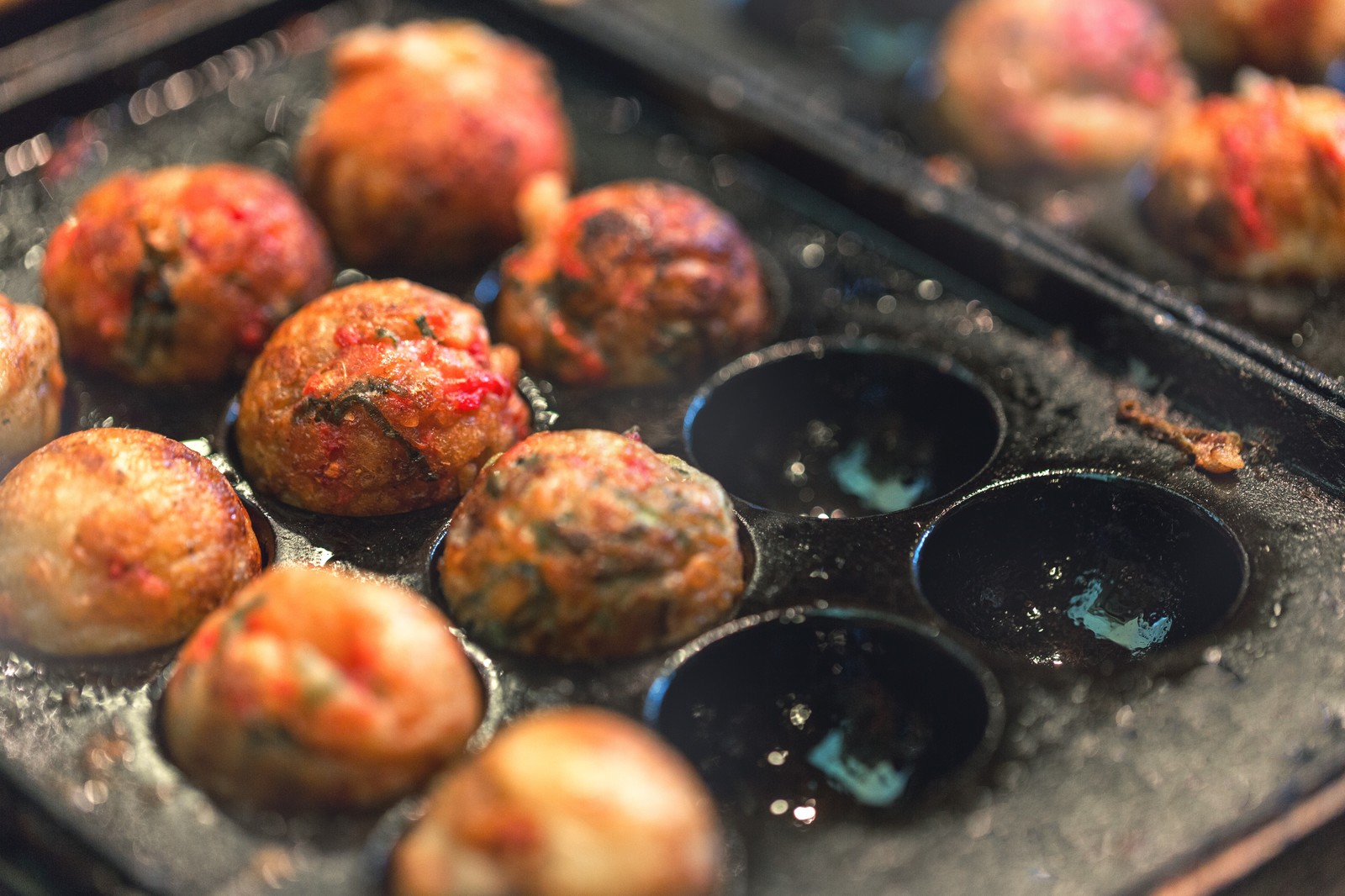
Surely squid is just as good a filling?
Our Japanese language reporter K. Masami recently received a huge amount of squid from some friends who love fishing. While talking with her friends in a group chat about what they’re going to do with the squid, someone suggested, “Let’s have takoyaki!”
Now, takoyaki, as you may know, is a dish of grilled balls of batter stuffed with pieces of octopus (called “tako” in Japanese), but Masami naturally assumed that this friend meant they should make takoyaki with squid (called “ika” in Japanese) instead, an idea that was soundly rejected by the group. But later Masami got to thinking…Why does takoyaki have to have octopus in it? Why not squid?
If we traced back to the origins of takoyaki, we’d find radio-yaki, a dish made by Osaka restaurant Aizuya. Radio-yaki is the same kind of flour-based dumpling as takoyaki, but filled with sinewy beef instead of octopus. At some point, the owner of Aizuya was influenced by Akashi-yaki, a dumpling from Akashi in Hyogo prefecture that’s made with eggs and octopus. That’s when he began making “takoyaki.”
The name “takoyaki” ensured that this particular dish would always be filled with octopus, but it seems like it’d be delicious no matter what you put in there, doesn’t it? Delicious things are sure to attract attention, so just substitute something else for the octopus in takoyaki, and just like that, you have a new hit food, right?
So why don’t we already have all different kinds of non-octopus takoyaki variants? Perhaps other ingredients just can’t live up to the expectations people have of octopus? Whatever the reason, Masami wanted to figure it out, so she decided to try cooking takoyaki with squid, since she had so much on hand.
Masami has actually experimented with takoyaki ingredients before. When she was in high school, she had once manned a takoyaki stall with her class during their school’s culture festival. However, they weren’t allowed to handle raw food, so they decided to use chikuwa, a type of fishcake, instead. She remembers it didn’t have the same firmness of the octopus, but it did have the right amount of savoriness. It wasn’t bad at all, and Masami thought squid should be at least as good as chikuwa.
Masami kept the batter exactly the same as it always is, by following the instructions on the package of takoyaki flour she bought at the supermarket. After pouring the batter into the divots on her takoyaki maker, she started adding the fillings, using squid for half of them and octopus for the other half, so she could compare her idea to the traditional style.
Once the batter was nicely browned in the specialty griddle and the takoyaki were cooked and aromatic, Masami decided she would try them plain first, in order to get the best sense of the differences between them. She started with the familiar taste of octopus takoyaki. The firm texture and mild flavor of the octopus was as reassuring as ever.
Masami has tried Aizuya’s radio-yaki before, but compared to octopus takoyaki, she found the beef to be richer and the dish as a whole to be less snackable. In thinking about it now, it could be that octopus might just be the perfect ingredient to add to balls of soft, hot batter. But…squid could be something special too.
The squid Masami used in her takoyaki experiment was golden cuttlefish, which has a slightly puffy texture. It’s a light kind of squid that, compared to octopus, has a more delicate flavor and less aftertaste. But after trying the squid takoyaki, then going back and trying the octopus takoyaki, and then going back and forth a few times, Masami thought she might understand why octopus is the preferred ingredient.
As you may have noticed by our description of the golden cuttlefish, different kinds of squid have many different textures. Octopus, on the other hand, generally has a single, particular firmness, which provides an interesting contrast with the soft batter. In other words, the octopus is what makes the whole texture of the takoyaki ball work so well.
What’s more, while the mild flavor of squid was overwhelmed by the strong flavor of takoyaki sauce, the flavor of the octopus is actually highlighted by the sauce. Perhaps that’s another reason why octopus just works in takoyaki.
Lastly, if you happen to break open the takoyaki, the purple octopus inside has more visual impact than the white squid.
All in all, octopus just seems to be the perfect filling for takoyaki batter, while squid was just “fine.” Besides, what would you even call takoyaki with squid in it? “Ikayaki” is already taken up by squid grilled on a skewer, a popular festival food, so it’d be a lot harder to come up with a suitable and identifiable name.
So perhaps squid isn’t going to replace octopus in one of Osaka’s most popular street dishes any time soon. Could anything unseat the reign of the octopus? Shrimp seems like it could be a good contender–but then again, so did squid. Perhaps more experimentation is necessary to decide.
Top image: Pakutaso
Insert images © SoraNews24
● Want to hear about SoraNews24’s latest articles as soon as they’re published? Follow us on Facebook and Twitter!